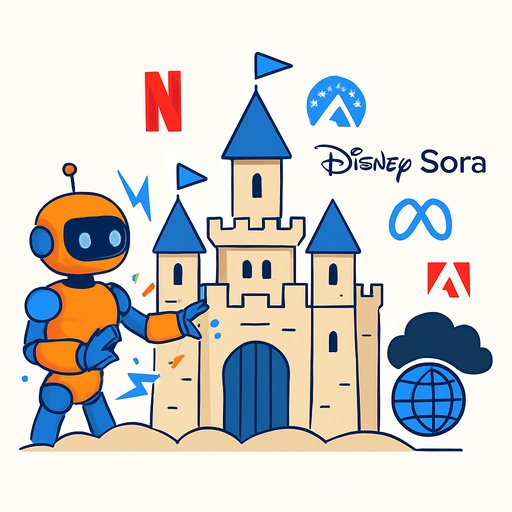Teemu Suviala on Creativity, Risk, and AI in Branding
At the recent Cannes Lions Festival, filmmaker Brady Corbet highlighted a key shift: AI is lowering production costs while encouraging bigger creative risks. This idea struck a chord with Teemu Suviala, global chief creative officer at Landor. For Suviala, technology’s boost to efficiency should lead to bolder creativity.
“When more can be done with AI, we should take more creative risks,” he said. “We can be more profitable with fewer resources, but it’s more important to push boundaries and do crazier, weirder, and more unpredictable things because AI can support us getting there.”
Balancing Efficiency and Experimentation
The advertising and branding world faces a tension: how to balance data-driven efficiency with the need for creative experimentation. Suviala challenges the industry’s traditional preference for polished, risk-averse messaging. Instead, he calls for resilience, imperfection, and human intuition, backed by over 30 years in design and branding.
Before Landor, Suviala shaped brand experiences at Meta’s Reality Labs and led creative teams at Collins and Wolff Olins. He co-founded studios working with Spotify, Google, Coca-Cola, and more. His broad experience keeps him close to the debate on creativity as a key business driver.
Resilience and Risk-Taking
Risk-taking and resilience go hand in hand for Suviala. Inspired by Nassim Nicholas Taleb’s Black Swan, he sees resilience as an open-mindedness to uncertainty, giving flexibility and optimism to handle setbacks.
Creating a Culture Where Risk Is Safe
At Landor, Suviala’s role is less about dictating ideas and more about building an environment where experimentation thrives. “My biggest job as a creative leader is to create a safe space for people to take risks,” he explained. Safety comes from transparency and trust, allowing teams to share ideas without fear of failure.
In Suviala’s words, “You have to create a culture that makes people feel safe enough to fail, so they can try different things. Mistakes are part of the creative exploration process.”
To support this, Landor uses frameworks like ‘Live it, write it, sketch it’, encouraging teams to challenge assumptions. For example, a trampoline park visit for an insurance client became a metaphor for risk-taking with safety nets. This hands-on approach helps creatives take bolder steps without career worries.
Another tactic is generating deliberately wrong answers to briefs. This playful inversion often uncovers unexpected insights. Parody exercises also help, by imagining products through comedic or cartoon lenses. Humor can unlock lateral thinking and new directions.
The Power of Play and Humor
Suviala breaks creativity into three parts: curiosity, empathy, and play. He encourages teams to approach problems with openness and playful collaboration, much like children building ideas together without shutting any down.
Humor is making a comeback in advertising. Cannes Lions added a Humor category in 2024, and by 2025, humorous entries surged. While brands worry about tone-deaf jokes, Suviala advises anchoring humor in vulnerability and self-awareness. He points to US brand Liquid Death as an example of humor driving distinctiveness.
However, empathy remains crucial. The controversial Burger King ‘Mouldy Whopper’ campaign shows how humor can divide audiences. Suviala’s advice: be open and transparent when mistakes happen. Showing vulnerability builds trust and can strengthen brand-consumer connections.
Creative Brands Embracing Humor and Play
Brands like Duolingo have built emotional ties with users through humor and playful interactions, such as caring notifications about their mascot. This role reversal—where users care for the brand—is a sign of emotional resonance crafted with care.
Data, AI, and the Risk of Homogenization
Despite these creative approaches, the industry is deeply data-driven. Suviala points out that obsession with AB testing and research can stifle decisions without hard data. With AI tools relying on similar internet data sets, outputs often become alike.
His advice: embrace imperfection. “Trust the impact of unpredictability and humanity,” he said. Brands need resilience to ride waves of change and trust their gut alongside data.
The Pendulum Swings Back to Human Touch
At Cannes, there was a noticeable shift toward valuing human intuition over pure data and AI. The creative industry moves in cycles, swinging between extremes of automation and human insight. Ultimately, gut feelings come from a mix of data and lived experience.
Why Risk Matters More Than Ever
Suviala’s ideas on resilience, risk, and humor are not quick fixes but practical attitudes for uncertain times. Exercises like ‘wrong answers’ and parody might seem lighthearted, but they help brands stay distinctive amid sameness.
The real challenge is whether marketers, pressured to deliver measurable results, will embrace unpredictability. As Corbet noted, AI offers efficiency—but it also invites risk. For creatives ready to push boundaries, that’s where the opportunity lies.
Your membership also unlocks:






